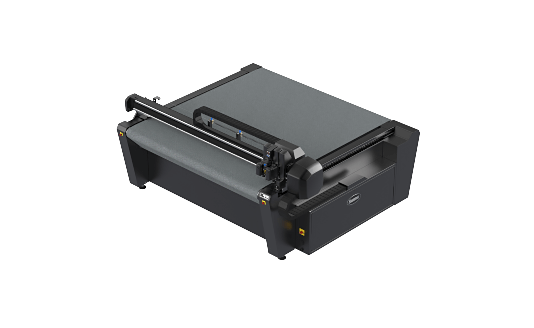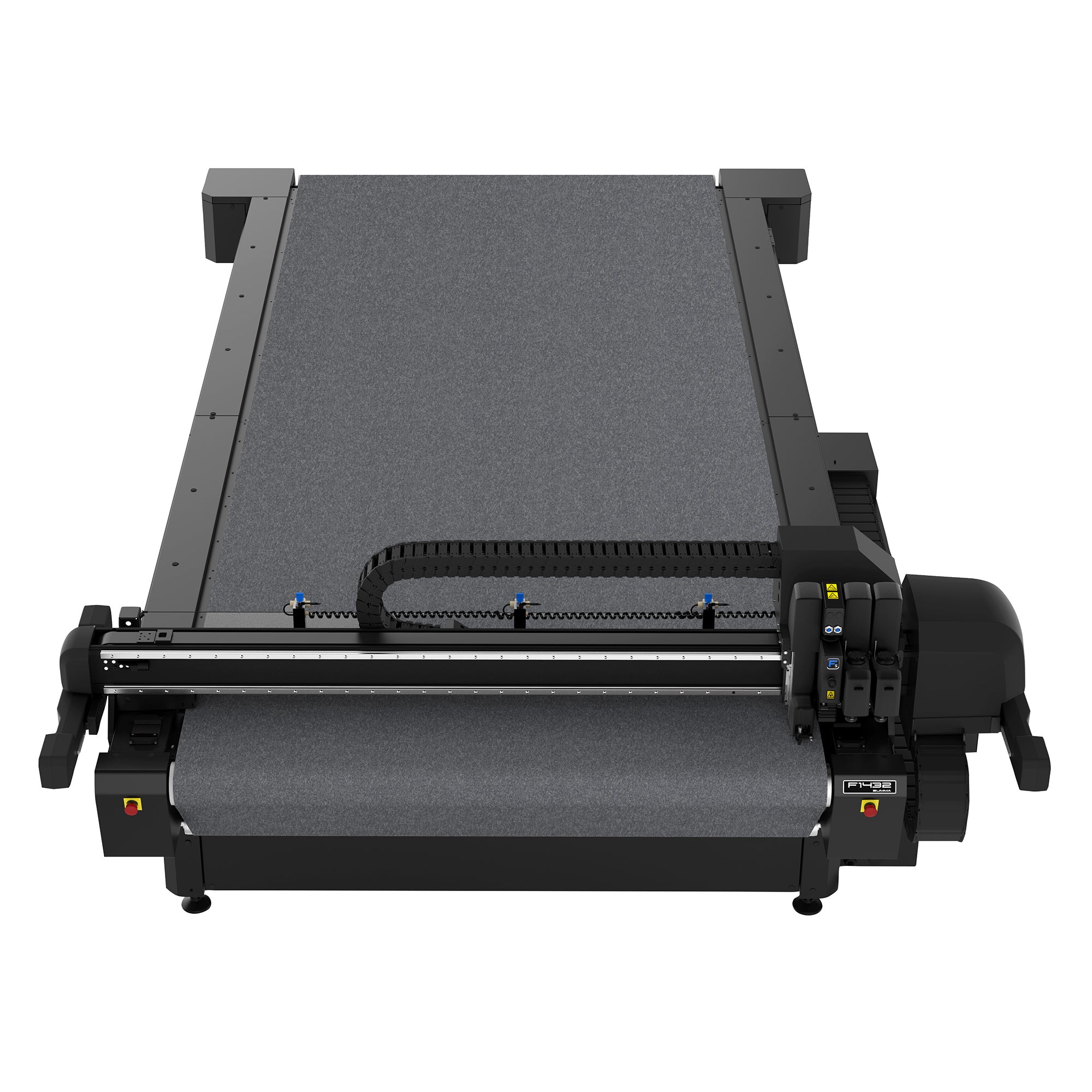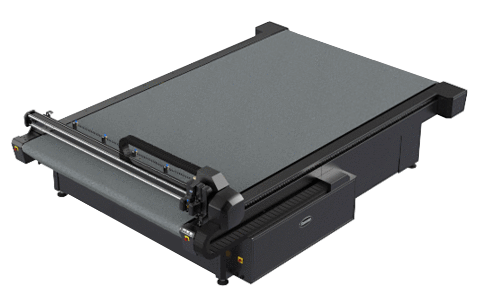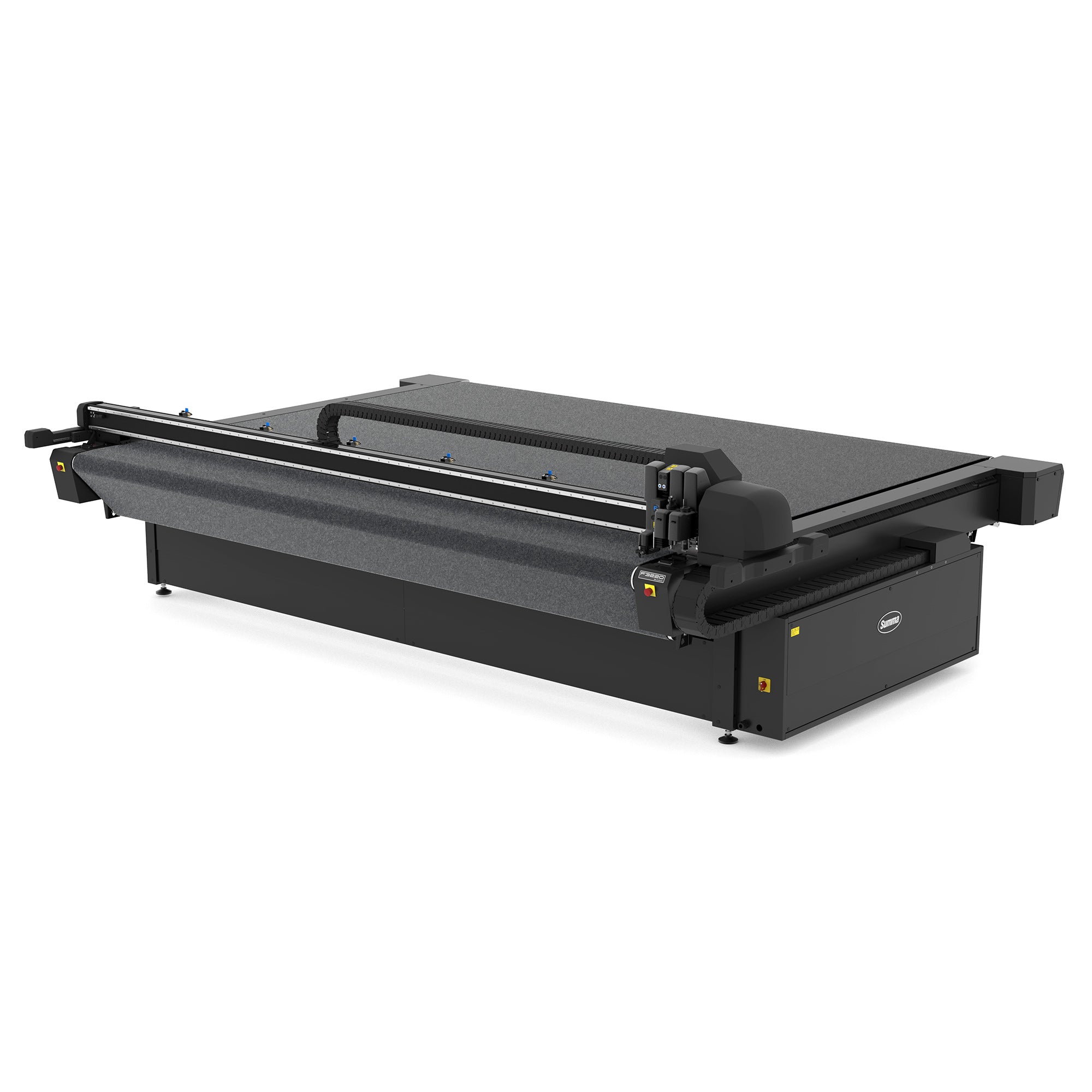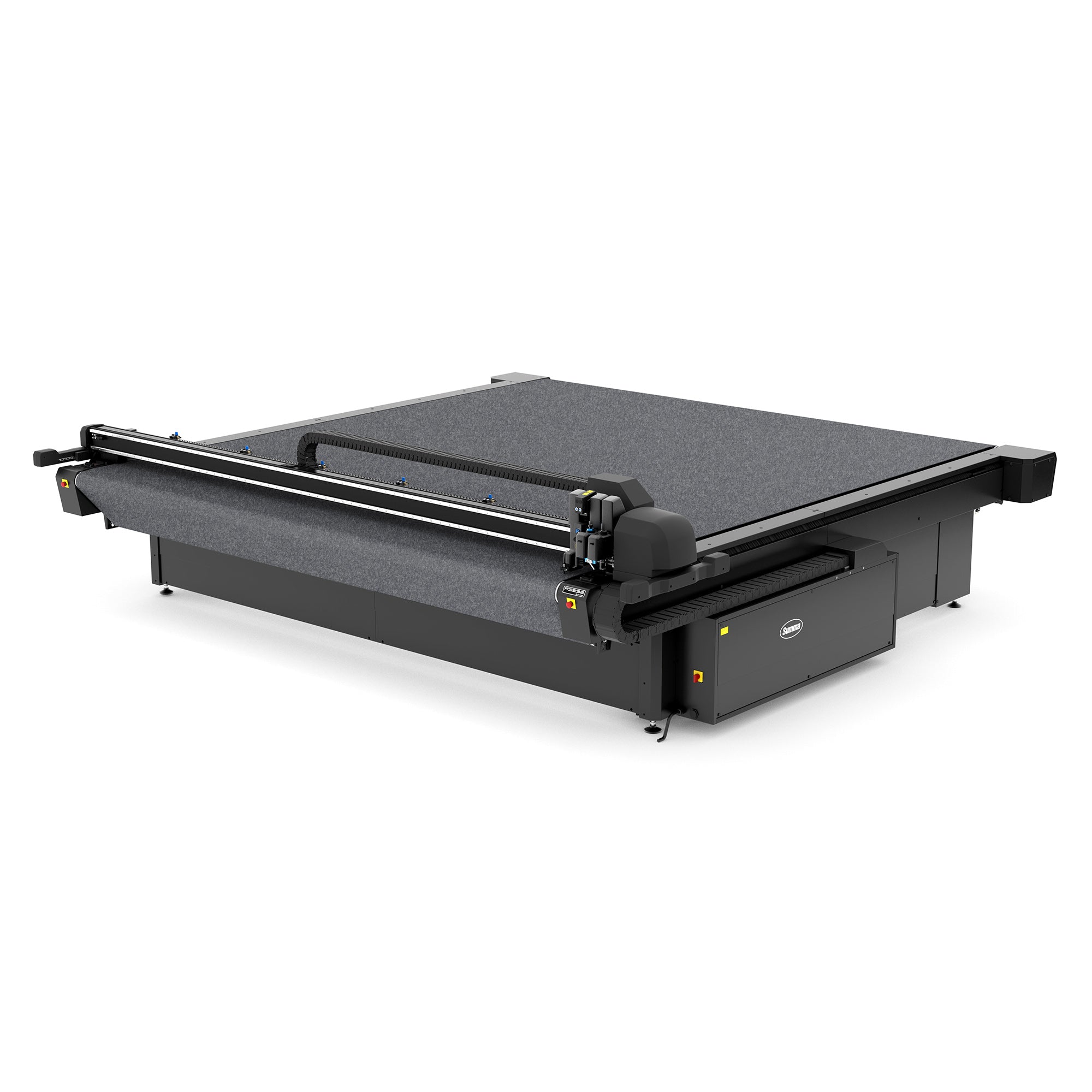Flatbed Plotter Cutters: Shop Digital Flatbed Cutters for Your Cutting Needs
Digital flatbed cutters are the perfect solution for prototyping and producing packaging, displays, textiles, and signage. Summa's F Series vinyl cutting and flatbed finishing systems are exceptional for short run productions while being easy to operate with short set-up times. The wide range of tools and add-ons to the vinyl cutting mechanism make the F Series extremely versatile for a multitude of applications such as vinyl, cardboard, foamboard, plastics, window film, wood, and fabrics. Summa's F Flatbed Cutter Series currently comes in four sizes ranging from 63” x 47” to 104” x 120”.
How Do Flatbed Cutters Work?
Digital flatbed cutters and it's tools are designed to cut a flat sheet of material instead of a roll. You begin the process by placing the sheet (paper or wood) on the production bed. A vacuum will keep it in place and aligned while using the tools. Once that’s done, you’ll connect the digital cutter to a computer via Wi-Fi or a cord to transport your design. After the cutter receives the design information, the vinyl cutting knife will control the movements of its blade according to your plan and accurately cut it out by following the registration marks.
What Are Flatbed Vinyl Cutters Used For?
The best flatbed vinyl cutters can be used for various production purposes, such as:
-
Signage: Because flatbed vinyl cutter tools are precise, they’re used in the sign-making industry for cutting vinyl films and creating logos, graphics, and letterings for banners, signs, decals, promotional displays, packaging materials, and more.
-
Home Decor: As digital flatbed cutter tool allow you to create 3D objects, you can use them to cut out intricately patterned wooden sheets or create decals for windows, walls, and doors to make them look great.
-
Clothing: Vinyl-cutting machine tools can cut heat transfer vinyl (HTV)--a material used to create custom T-shirt designs like logos, graphics, text, or complex shapes–with extreme precision. These can be applied to clothes using heat and pressure.
-
Automotive: Digital flatbed cutter tools are used to precision cut seals, insulation, gaskets, and car interior trim components.
Benefits of Using Flatbed Cutter Series
Flatbed vinyl cutters can help you craft flawless graphics, crisp lettering, and intricate designs using routing and precision cutting–but that’s not all. Let’s look at other benefits of using these flatbed cutter machines:
-
Unparalleled Precision
Because the sheet material (or ‘substrate’) is held in place by a vacuum, it never moves an inch. Only the ‘eye’ (which guides the cutting head along the registration marks) and the computer-controlled cutting head move across the sheet.
This ensures the cutting system’s accuracy and precision remain unchanged regardless of the number of cuts performed or the position of the material on the cutting bed, making each cut as accurate as the first.
-
Higher Efficiency
If you use tools like cutter bars or bench cutters to cut panels to the same size, but it takes too long, flatbed cutter tools can increase your throughput. Why? Because they can handle multiple panels at one time, reducing processing time and increasing efficiency.
Plus, these cutting tools are digital, which means there’s no need for manual measurements or adjustments when cutting panels. This reduces the need for manual labor and saves time when flatbed cutting.
-
Increased Versatility
Vinyl cutters are masters of precision design, whether it's cutting vinyl decals or perforations, creasing and scoring cards, or die/half-cutting their way through aluminum or wood. This means you can use these plotter tools for various applications, increasing your throughput across design projects.
When Should You Buy a Flatbed Cutting System?
Here’s when you should probably consider buying a cutting plotter:
-
Prototyping
If you quickly need to whip up prototypes to get projects approved by clients, an in-house cutting machine will speed up the process and save time. You’ll also be able to meet deadlines without fail with the support of this flatbed cutting feature.
-
Reducing Costs
If you’re forced to go for large product runs to reduce costs, buying a cutting plotter will help you remove that constraint and produce just as much as requested.
-
Outsourcing
If you’re struggling with delays because of outsourcing your cutting work, a digital cutter will help you speed up your production and gain more control over product cost and quality.
What to Consider When Choosing a Flatbed Vinyl Cutter?
When choosing a flatbed vinyl cutter, here are several factors to consider to ensure you select the right flatbed cutter machine:
-
Cutting Area
You can’t get a cutting machine that’s too big for your workshop. So, take a look at the amount of space you have in your workshop to figure out the size of the flatbed vinyl cutter you can easily fit into the space.
-
Speed
A vinyl cutting machine’s speed–measured in inches per second–determines how fast it can cut your design. High-speed flatbed digital cutters and tools are an excellent investment if you cut thousands of sheets per week because they cut through them faster.
-
Downforce
The downforce of a digital cutter is how hard it presses its blade into the sheet material. For instance, if the downforce is high, the machine can easily cut through denser and thicker materials like wood or aluminum.
If the pressure or downforce is low, it can cut through vinyl sheets, paper, and other thinner and less dense materials.
-
Drive Motor
A flatbed digital cutter’s drive motor controls the grit roller that guides the pen and blade across the bed or platen. It has two system types: digital servo and stepper drive; both tools have their pros and cons.
For instance, stepper motors are slower and louder than servo motors. They’re also highly accurate when working on thinner materials. However, servo motors are more accurate when working with intricate designs and small letters.
-
Tracking
Tracking is the ability of a digital cutter to precisely align materials on its bed. And the better this ability, the lower the need for adjusting and scrapping work, saving effort, time, and money.
Cutters with steeping motors have slower tracking than digital servo motors. This makes the latter a better choice if you cut intricate or small products.
-
Operating System (OS) Compatibility
A flatbed vinyl cutter is a software-controlled machine at the end of the day, and if it isn’t compatible with your system, you won’t be able to send information to the machine on what to work on.
So, be sure to always check the machine's software compatibility and whether the design software supported by the cutter is easy to use. If it isn’t, you may have to navigate a steep learning curve you may not have time to dedicate to.
Explore our Summa F Series collection to find the right tools for your business. You can also find printers, laminators, heat transfer machines, and other tools.
